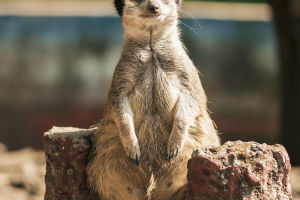The camel, an animal that lives in harsh desert environments, is known as the "ship of the desert". They are survival experts in deserts and extreme climates.
With their unique physiological structure, camels can survive for long periods of time in hot deserts. Today, we will take you to learn more about the characteristics, history, and importance of this wonderful animal around the world.
Physical characteristics of camels
The first thing that comes to mind is probably the iconic feature of camels - their dorsal bump. The main function of the bump is to store energy, which can be converted into water and energy when needed, allowing camels to survive for days or even weeks in an environment without water sources. In addition, the size and skin of camels are also important factors in their adaptation to the desert environment.
They have thick skin and long and thick eyelashes, which can effectively resist sandstorms and strong sunlight. Their nostrils can be completely closed to prevent sand and dust from entering the respiratory system.
The toes of camels are wide and flat, which allows them to walk on the sand without sinking. Even in high temperatures, camels can maintain a stable body temperature and avoid overheating.
History of Camel Domestication
The history of camel domestication dates back to around 3000 BC. The earliest camel domestication efforts occurred in the Middle East, when people began to use camels as a means of transportation, especially in deserts and arid areas. Camels played a vital role in ancient caravans, not only were they able to carry heavy loads, but they were also able to provide the required water and food in extreme conditions.
In ancient times, many cultures and ethnic groups relied on camels for long-distance trade. They were one of the most important means of transportation on the Silk Road. Over time, camels gradually became part of the lifestyle in some regions, especially in North Africa and the Middle East.
Role of Camels in Modern Society
Although the advent of modern transportation has reduced the role of camels in transportation, they are still indispensable in some areas. Especially in desert areas, camels are still an important part of people's daily life. They are not only used as a means of transportation, but also provide dairy products and meat. In some countries, camel milk is considered a nutritious food, while their meat is a traditional delicacy.
Camels also play an important role in the tourism industry. Many tourists come to desert areas to experience the unique experience of riding a camel through the desert, which has become a popular tourist project.
Camels and Culture
In many cultures, camels are not only important animals in life, but also carry symbolic meanings. They are often seen as a symbol of tenacity, adaptability and loyalty. Camels appear in many works of art, legends and folk tales.
In Arab culture, camels are a symbol of desert life and represent the indomitable spirit. In some places, camels are also used for racing or as objects of competition. This activity not only reflects the speed and endurance of camels, but also shows the deep emotional bond between camels and humans.
The Future of Camels
Despite the continuous development of modern technology, camels still play an important role in many areas. They are not only a miracle of life in the desert, but also a part of human history and culture. With the improvement of environmental awareness, we should cherish this animal that is closely connected with nature and protect their habitats.
hope that through this article, you can learn more about camels and their importance in our lives. If you have the opportunity to travel to the desert, don’t forget to have an up-close encounter with camels and experience their wisdom in surviving in extreme environments.

